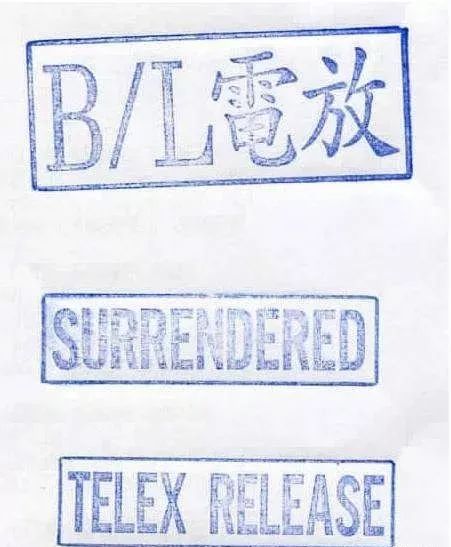NEWS & BLOG
Views: 39 Author: Site Editor Publish Time: 2022-05-05 Origin: Site
In foreign trade transactions, international logistics is an essential step and very important. When the international logistics is in control, the goods are firmly in the hand, and there is no fear of the goods and wealth being empty.

Then we need to have a clearer understanding of several release methods of international logistics. On the one hand, we can ensure the safety of the goods, and on the other hand, we can deliver the goods to the customers in a timely manner through different methods, which means that the payment for the goods can be recovered as soon as possible and funds can be avoided. Turnaround is difficult.
The following focuses on the three release methods and differences of international shipping:
TELEX RELEASED:
Definition: The bill of lading information is sent to the shipping company at the destination port by electronic message or electronic message. The shipping company informs the agent at the port of destination to release the goods, without the original bill of lading, as long as it proves that it is the consignee and the person to be released by telegram, the goods can be picked up.
Advantages: convenient, fast and safe (to avoid the risk of missing bills of lading).
Disadvantage: The consignor cannot control the cargo rights.

OCEAN BILL:
Definition: The original bill of lading issued by the shipping company. It is a document of title, the consignee takes the goods according to this, it can be endorsed and transferred, and it is an important document; SHIPPER will get the original bill of lading from the forwarder, scan it to CNEE, arrange payment, and SHIPPER will then express the whole set of bills of lading. Mail it to CNEE, CNEE will pick up the goods with the original bill of lading in exchange for the bill of lading; the ocean bill of lading is used more.
Advantages: It is convenient for the buyer to pick up the goods immediately, simplifying procedures and saving costs.

SEA WAYBILL:
Definition: SWB for short, is a form of placing a bill of lading. Once the SWB is out, the right of the goods is transferred from SHIPPER to CNEE, which means that CNEE can pick up the goods directly. SWB does not need the original, nor does it require a telephony release fee. For trusted companies, this form of delivery can be used.
Advantages: fast delivery of orders, fast delivery, convenient and fast.
Disadvantages: Generally, there is no way to control the goods.
Application scenarios:
1. After all the payment is received, the sea waybill can be issued,
2. Multinational companies, Chinese subsidiaries are responsible for purchasing for foreign parent companies. In order to facilitate the delivery of goods, a sea waybill can be issued quickly.

The Difference:
1. SWB is a bill of lading with the ship, which is a bit similar to telex release. Once the SEA WAY BILL is confirmed, after the goods arrive at the port, the agent will directly release the goods to the consignee.
2. For telex release, even if the goods arrive at the port for a long time, as long as the consignor does not notify the agent in writing to release the goods, the agent will not release the goods to the consignee.
3. The main difference between SWB and ocean bill is that SWB does not function as a certificate of title, ocean bill is a certificate of title, ocean bill can be transferred by endorsement (indicative bill of lading), sea waybill cannot be transferred, sea waybill is the delivery of goods The person can only be the consignee indicated on the waybill.
Summarize:
In the final analysis, all transactions in trade are transactions between buyers and sellers, with one hand for payment and the other for delivery; as long as the customer's payment is received, the above forms of release are risk-free.